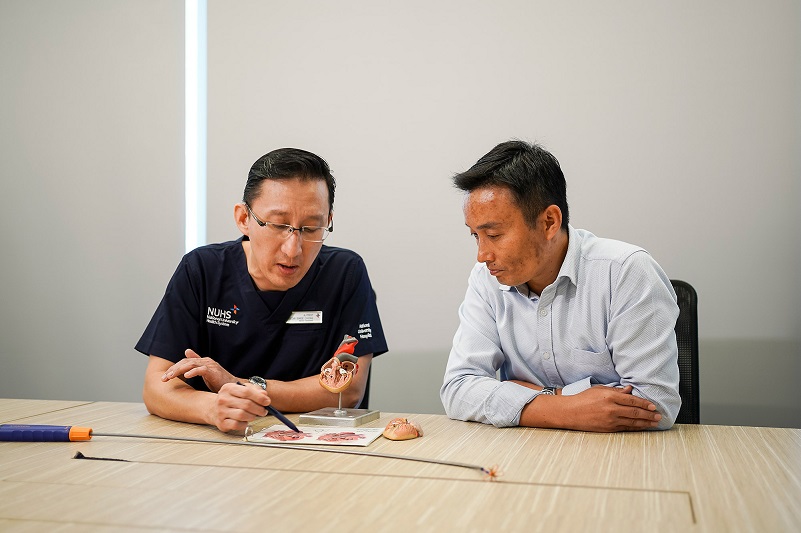EnvisioningHealth - Changing Lives One Idea at a Time | Innovation X Healing
A ticking heart:
young and healthy no longer immune
Amidst an increase in heart-related issues amongst young adults,
a new technique offers a promising—and safer—remedy for atrial fibrillation.
Issue 2 | September 2023

 Subscribe and ensure you don't miss the next issue!
Subscribe and ensure you don't miss the next issue!
Alarmingly, heart issues, once predominantly an affliction of the elderly, are now more commonly observed among younger adults. A recent
16-year US study revealed that one in five heart attack survivors is under the age of 40, with this subset growing by 2% annually over the last decade. Such trends underscore a pressing need for heightened awareness and early intervention among young adults.
Heart rhythm abnormalities (
arrhythmias) are also common and are increasingly diagnosed in younger patients. Atrial fibrillation (AF) is the commonest arrhythmia in adults. Almost 2% of Singapore’s population grapples with this condition. It is a heart rhythm disorder where the upper chambers of the heart, known as the atria, beat irregularly and out of sync with the lower chambers. This can lead to sequalae such as
heart failure and
stroke.
Lifestyle diseases such as
hypertension,
diabetes, and
obesity are risk factors for AF and its prevalence explains the observed spike in AF cases..
Out of rhythm
Ablation therapy offers the possibility of a “cure” for AF. Compared to medication, ablation is more effective in achieving symptom control; and has been shown in large clinical studies to reduce the probability of heart failure and mortality.
During an AF ablation procedure, tiny scars are created within the heart muscle to create a barrier in order to “ring-fence” abnormal electrical impulses and prevent them from initiating AF.
Traditionally, thermal-based energy (heat or cold) is used to create these scars. Although effective and with a long track record, this modality carries with it a risk of collateral damage to surrounding structures such as the veins, arteries and nerves.
Pulsed precision
Gaining momentum in Europe and Australia, another promising technique called pulsed field ablation is now available at the NUHCS.
“This procedure differs significantly from its thermal counterpart. Relying on electrical pulses, pulsed field ablation is highly ‘tissue-selective’,” shares A/Prof Seow, who is also a Programme Director of the Heart Rhythm Programme and senior consultant at the Department of Cardiology, NUHCS. “It zeroes in on the heart muscle, ensuring that nerves, blood vessels, and other tissues remain unharmed.”
Trials in the US and Europe have demonstrated the efficacy of pulsed field ablation, with damage to surrounding veins plummeting from 3% to a remarkable zero. Moreover, this procedure is notably faster. What used to take up to four hours can now be completed in less than two hours.
Anticipating a growing preference for this technique, NUHCS is working on expanding its capabilities.
Give your heart a break
Young or old, heart issues are on the rise, and youth is no longer the sanctuary it once was. The lifestyle choices of today, whether they pertain to diet, activity, or stress, cast long shadows on the cardiac health of tomorrow.
The adage holds—prevention is always better than cure. Adopting heart-friendly habits, managing stress, maintaining a balanced diet, and regular health assessments can mitigate the risk of daunting conditions like atrial fibrillation.
Like this article? Simply subscribe to make sure you don't miss the next issue of EnvisioningHealth!
